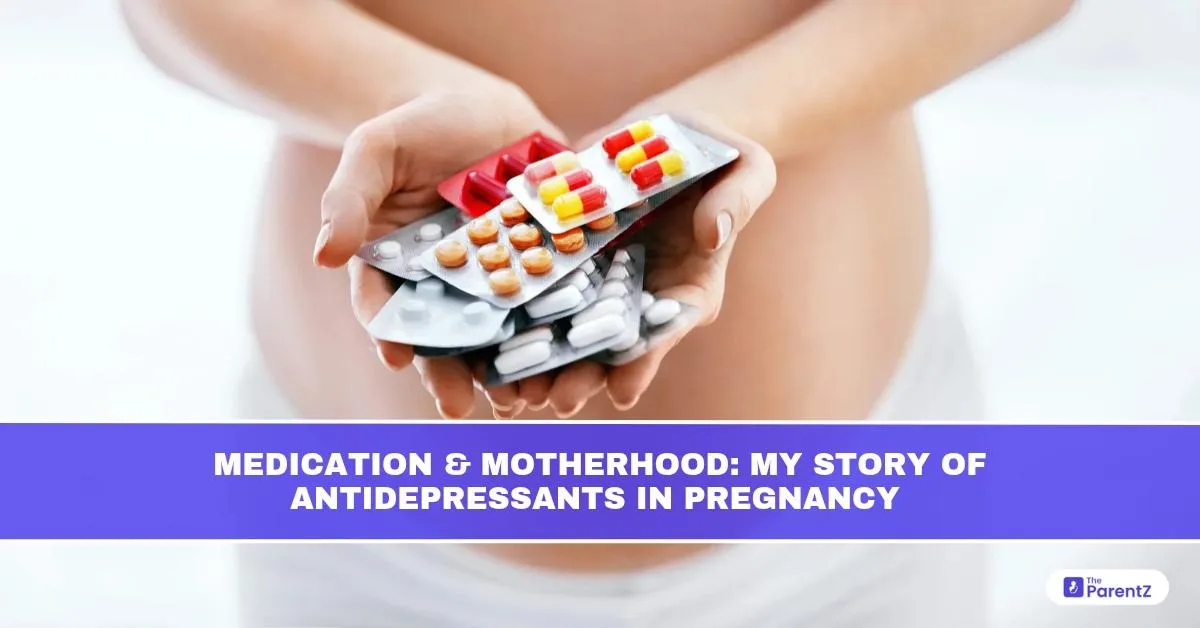Depression affects approximately 1 in 5 women during pregnancy, with varying severity and functional impact. When left untreated, prenatal depression can lead to adverse obstetric outcomes, including preterm birth, low birth weight, and impaired mother-infant bonding. For many women, antidepressant therapy remains an essential part of their mental health care during this time. However, fears about medication safety, social stigma, and clinical uncertainty often complicate decision-making.
According to the American College of Obstetricians and Gynecologists (ACOG) and the American Psychiatric Association (APA), selective serotonin reuptake inhibitors (SSRIs), particularly sertraline, are considered safe and effective options for managing moderate to severe depression during pregnancy when prescribed under appropriate supervision.
Understanding the Risk–Benefit Balance
Untreated prenatal depression has been linked to higher rates of spontaneous abortion, impaired fetal growth, and postpartum depression. Maternal stress may affect placental cortisol regulation, leading to long-term neurodevelopmental implications for the fetus.
On the other hand, while most SSRIs are considered low-risk, some studies have reported small, statistically insignificant increases in neonatal adaptation syndrome, persistent pulmonary hypertension of the newborn (PPHN), or congenital heart defects. However, large meta-analyses published in JAMA and The New England Journal of Medicine emphasize that absolute risks are low and, for many patients, the benefits of treatment outweigh the potential harms.
Real-Life Story 1: Priya, 31, Delhi – Sertraline and Sanity
Priya, a corporate lawyer in Delhi, had been managing generalized anxiety disorder and depression for over 5 years with psychotherapy and a stable dose of sertraline. When she discovered she was 9 weeks pregnant, she panicked and stopped her medication cold turkey.
After consulting her psychiatrist and OB-GYN, she resumed sertraline at a lower dose, monitored regularly. Her pregnancy proceeded without complications, and she delivered a healthy 2.9 kg baby boy at 39 weeks.
Choosing the Right Medication
Among SSRIs, sertraline is the most commonly prescribed during pregnancy due to its lower placental transfer rate and favorable safety profile. Fluoxetine and citalopram may also be used. Paroxetine is typically avoided in the first trimester due to a slightly higher association with cardiac defects.
For women with bipolar depression or psychotic features, atypical antipsychotics such as quetiapine may be considered under close psychiatric supervision. Tricyclic antidepressants and SNRIs (e.g., venlafaxine) are used selectively in treatment-resistant cases.
Medication should always be paired with non-pharmacologic support, including cognitive behavioral therapy (CBT), regular follow-up, and support groups.
Real-Life Story 2: Ananya, 28, Bengaluru – Choosing Therapy First, Then Medication
Ananya had a history of postpartum depression after her first child, which had resolved with talk therapy. During her second pregnancy, she began feeling the return of depressive symptoms at around 16 weeks: low energy, irritability, and hopelessness.
Her obstetrician collaborated with a perinatal psychiatrist, and after detailed counseling, Ananya began escitalopram at a low dose. The medication helped stabilize her mood within 2 weeks.
Her daughter was born healthy and breastfed successfully, with pediatric monitoring during the neonatal phase.
Neonatal and Postpartum Considerations
Neonates exposed to SSRIs may experience mild, self-limited symptoms known as neonatal adaptation syndrome such as jitteriness, respiratory distress, or feeding difficulties—usually resolving within 2–5 days. Long-term neurodevelopmental studies have not shown significant deficits in infants exposed to SSRIs in utero.
Postpartum relapse risk is higher in women with prenatal depression. Continuation of antidepressants after delivery is often advised, especially in patients with prior episodes.
Breastfeeding is compatible with many SSRIs, including sertraline and paroxetine, which have low concentrations in breast milk. Pediatric follow-up is essential.
Conclusion
For pregnant individuals with a history or current episode of depression, the decision to continue or initiate antidepressants is complex but it is also highly personal and medically manageable. A patient-centered, informed, and collaborative approach allows for both maternal stability and fetal safety.
Real-life stories like Priya’s and Ananya’s reflect a deeper truth: mental health is maternal health. Compassionate, stigma-free care enables women to navigate pregnancy not with fear, but with strength and that, too, is a form of protection for the child.
References
- Yonkers KA, Wisner KL, Stewart DE, et al. The management of depression during pregnancy: A report from the American Psychiatric Association and the American College of Obstetricians and Gynecologists. Obstet Gynecol. 2009;114(3):703–713.
- Huybrechts KF, Palmsten K, Avorn J, et al. Antidepressant use in pregnancy and the risk of cardiac defects. N Engl J Med. 2014;370(25):2397–2407.
- Reefhuis J, Devine O, Friedman JM, Louik C, Honein MA. Specific SSRIs and birth defects: Bayesian analysis to interpret new data in the context of previous reports. BMJ. 2015;351:h3190.
- Payne JL, Meltzer-Brody S. Antidepressant use during pregnancy: Current controversies and treatment strategies. Clin Obstet Gynecol. 2009;52(3):469–482.








Be the first one to comment on this story.